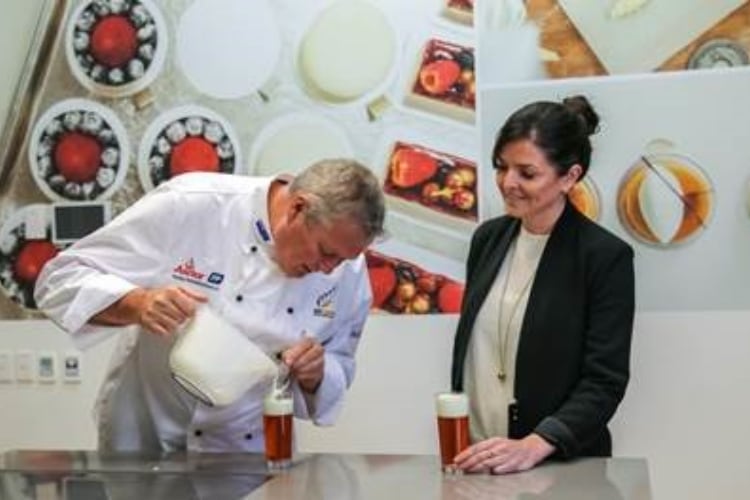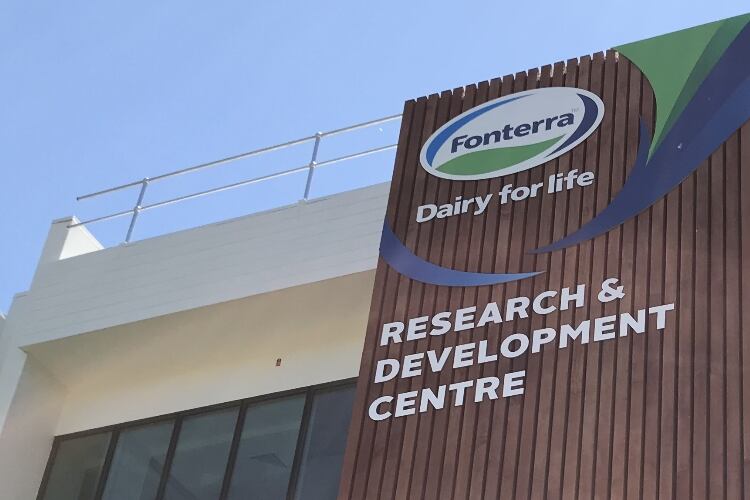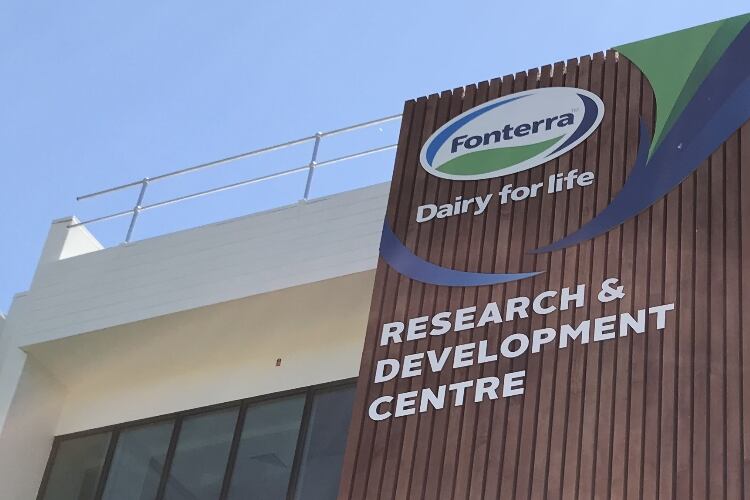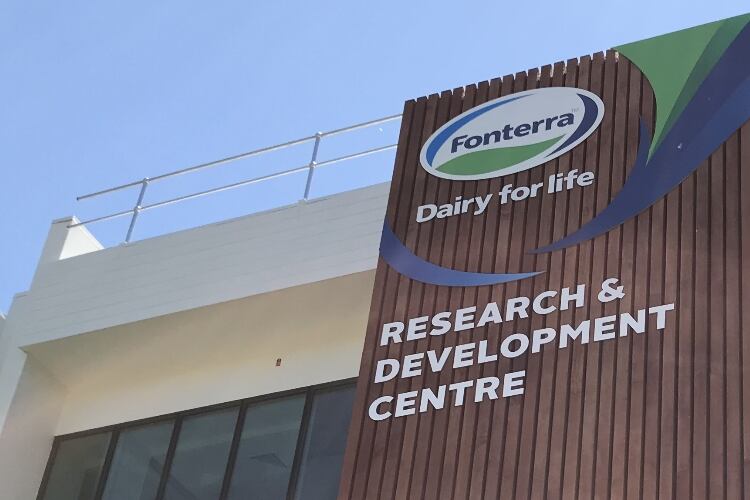It also announced the consolidation of its specialty cheese making facilities, resulting in the closure of its Te Roto factory, which employs 65 people.
The cooperative reports a Net Loss After Tax of NZ$605m. Normalized earnings before interest and tax (EBIT) was NZ$819m, down 9%, the cooperative’s free cashflow was NZ$1.095bn, up 83%, and the return on capital was 5.8%, down from 6.3%.
Fonterra CEO Miles Hurrell said 2019 was incredibly tough for the cooperative but it was also the year Fonterra made decisions to set it up for future success.
“These included us reflecting changing realities in asset values and future earnings, lifting our financial discipline, getting clear on why we exist and completing a strategy review,” Hurrell said.
“Many of these calls were painful, but they were needed to reset our business and achieve success in the future.
“We made the decision to reduce the carrying value of several of our assets and take account of one-off accounting adjustments. These totalled NZ$826m, which contributed to a Net Loss After Tax of NZ$605m for FY19.”
Hurrell added, “As we do every year, we took a hard look at our asset valuations and future earnings potential. When it came to DPA Brazil, Fonterra Brands New Zealand and China Farms, we saw there were either some changes in their local economies, increased competition or business challenges impacting their forecast earnings. This meant we needed to reduce their carrying value.
“Clearly, any write-down of an asset is not done lightly. But what I hope people can also see is that we’re leading the coop with a clear line of sight on potential opportunities as well as the risks.”
Commenting on the underlying performance of Fonterra, Hurrell said Fonterra’s normalized earnings per share for the year was 17 cents, above the last forecast for the year of 10-15 cents.
“The gross margin from our largest business, New Zealand Ingredients, was NZ$1.332bn, up 3% on last year due to increased sales and price performance.
“Our Foodservice performance also improved on last year, with gross margin up 10%. This was despite lower total sales volumes, following a slow start to butter sales in Greater China and Asia.”
However, Hurrell said, there were challenges including Australia Ingredients, businesses in Latin America and the consumer businesses in Sri Lanka, Hong Kong and New Zealand.
In September 2018, Hurrell set out a three-point plan – take stock of the business, get basics right and ensure more accurate forecasts. Reflecting on that plan, he said it helped focus the cooperative.
“I’m pleased with the progress we’ve made with our financial discipline. You can see it in our improved cashflow, reduced debt and significant cost savings.
“As part of taking stock of our business we reviewed our asset portfolio and made significant calls on three assets we identified as no longer core to our strategy. We sold Tip Top for NZ$380m (US$239m) and our share of DFE Pharma for NZ$633m (US$398.6m). We also wound back our relationship with Beingmate and are now looking at options to reduce our financial stake in this company.
“Taking stock of our business didn’t stop there. We also exited our Venezuela businesses, announced the closure of our Dennington manufacturing site in Australia and kicked off a strategic review of DPA Brazil and two of our farm-hubs in China.”
At a glance:
Total Cash Payout for 2018/19 season: NZ$6.35 (US$4.00)
Farmgate Milk Price NZ$6.35 per kgMS
Dividend of 0 cents per share
New Zealand milk collections: 1.523bn kgMS, up 1%
Normalized sales revenue: NZ$20.1bn (US$12.7bn), down 2%
Net loss after tax: NZ$605m (US$381m), compared to a loss of NZ$196m (US$123.4m)
Normalized EBIT: NZ$819m (US$515.7m), down 9%
Normalized gross margin: 15%, down from 15.4%
Normalized operating expenses: NZ$2.311bn (US$1.455bn), down 7%
Capital expenditure: NZ$600m (US$378m), down 30%
Normalized Return on Capital: 5.8%, down from 6.3%
Free cash flow: NZ$1.095bn (US$689m), up 83%
Normalized earnings per share: 17 cents
Gearing ratio: 48.2%, down 0.2%
FY20 forecast Farmgate Milk Price: NZ$6.25-7.25 (US$3.93-4.56) per kgMS
FY20 forecast earnings per share range: 15-25 cents
Hurrell said Fonterra has contributed to China’s dairy industry by developing model farms, which were seen as necessary to protect exports to China.
“Growing demand for fresh milk in China’s consumer market suggests prices are likely to rise in the future – however, the timing is uncertain. As a result of this, and the fact that the development of these farms is now complete, we are looking at how we can best unlock the value in the farms,” he said.
“This sort of discipline around reviewing our asset portfolio isn’t a one-off. We need to be continuously reviewing our assets and making sure they are meeting the changing needs of our coop.
“As part of the three-point plan, we also set a goal in FY19 to reduce our debt by NZ$800m (US$504m). Tip Top made a significant contribution and, along with the sale of DFE Pharma, we expect to exceed this target in FY20. We also set ourselves a target to reduce capital expenditure by NZ$200m (US$126m) in FY19 and we achieved NZ$261m (US$164.3m). We reduced our operating expenses by NZ$185m (US$116.5m), year on year.”
Final Farmgate Milk Price for the 2018/19 season
Fonterra announced a final Farmgate Milk Price for the 2018/19 season of NZ$6.35 per kgMS.
Fonterra Chairman John Monaghan said this was the third year of sustainable prices and represented NZ$9.7bn (US$6.1bn) for milk payments to Fonterra’s farmer owners in the 2018/19 season.
Global prices for whole milk powder, butter and anhydrous milk fat were weaker compared to last year, driven by excess supply relative to demand, particularly for whole milk powder, for much of the season. Skim milk powder prices, however, were stronger.
Refreshed strategy and FY20 earnings guidance
Hurrell said the final big call for the year has been sharing the new strategy: healthy people, healthy environment and healthy business.
“This is the right strategy for us, but it requires us to make some hard choices. We’ve looked at the big opportunities and risks for a New Zealand dairy coop today. We’ve also got clear on what our strengths are and the hard realities we have to face up to. I’m pleased that we now have a strategy that is built from the belief that our farmers’ milk here in New Zealand is the best and most precious in the world,” Hurrell said.
“Recognizing this, while we will complement our farmer owners’ milk with milk components sourced offshore when required, we will start rationalizing our off-shore milk pools over time.
“Our strategy will see us focus on world-class dairy ingredients for our customers around the world, and innovative ingredients that meet nutrition needs right across people’s life stages. We will focus on ingredient categories: Paediatrics, Medical and Ageing, Sports and Active, and Core Dairy.
“We will also create new opportunities in new ways for foodservice. This will include building on our foodservice success in China and developing new markets, particularly in Asia Pacific.”
Hurrell said the focus on dairy ingredients and foodservice will see Fonterra driving more value from the parts of the business that consistently perform.
“We will still be in Consumer and will focus on markets throughout Asia Pacific. The majority of the products we sell in these markets are made from New Zealand milk and are similar to those we sell in our Ingredients business. This creates efficiencies and helps us play to our strengths. It also means we will reduce our consumer product portfolio to those that create superior value.”
Monaghan said, “Our forecast earnings range for FY20 starts at 15-25 cents per share, but the five-year plan is to deliver a target of 50 cents per share.
“Our starting earnings range reflects our change in culture. We will earn the right to make ambitious decisions by first doing the basics right and returning our balance sheet to a position of strength. That will give us options to go for the opportunities that we create in the future.”
The board also reviewed the Dividend Policy guidelines within the context of the new strategy. Monaghan said, “Under the new guidelines, we would expect the dividend payment to be 40-60% of reported Net Profit After Tax, excluding any abnormal gains, from what was previously 65-75% of adjusted Net Profit After Tax over a period of time. An interim dividend will not be more than 40% of the forecast total dividend and no more than net earnings at half year.
“In addition to the new percentage of earnings, two additional key principles will guide our Board when considering the payment of a dividend. A dividend should not require our coop to take on more debt, and a dividend should not reduce our coop’s ability to service existing debt.
“The distribution of any abnormal gains, such as an asset sale, will be considered separately.”
New operating model
Fonterra said an immediate priority is re-organizing to best deliver the new strategy.
Hurrell said he is introducing a new customer-led operating model.
“We need an organizational structure that allows us to live within our means, create better connections with our customers, create value by focusing on what we are good at, and where we can differentiate ourselves. The structure encourages us to work together as one team.
“Our new operating model will see us move from our two large, central businesses (Ingredients, and Consumer and Foodservice) to three in-market customer facing sales and marketing business units – Asia Pacific (APAC), Greater China (GC), and Africa, Middle East, Europe, North Asia, Americas (AMENA).
“We are creating a new team (office of the chief operating officer) which will be the enabler for our in-market business units to create value through sustainability, innovation and operational scale and efficiency.”
Hurrell said Judith Swales would become APAC CEO, and Kelvin Wickham AMENA CEO.
He also said Robert Spurway was leaving, to “fulfil his passion for directly running a business again.”
“Our priorities in our first year of our new strategy will be to build a winning team, support regional New Zealand, reduce our environmental footprint and hit our financial targets,” Hurrell concluded.
Te Roto closure
Currently the cooperative has two specialty cheese manufacturing sites operated by Fonterra Brands New Zealand (FBNZ) - one in Te Roto and the other in Bridge Street, Eltham. The planned consolidation will see operations move to Eltham.
Brett Henshaw, managing director FBNZ, says the announcement is ‘very tough, but necessary.’
“We owe it to our farmer shareholders and unit holders to get the best returns we can for them, and having two specialty cheese plants means there’s duplication of costs.
“The specialty cheese business has been losing money in having to run the two sites. This change will consolidate costs and make it sustainable to continue in the category.”
This includes looking at redeployment options to Eltham, 250km from the Te Roto site, as 34 new jobs will be created in Eltham as a result of the planned consolidation.
There are currently 65 employees working at Fonterra’s Te Roto site.
The phased transition of the speciality cheese making operations to Eltham Bridget Street is planned to be completed by the end of April 2020.




